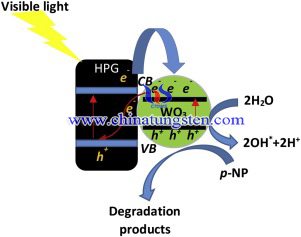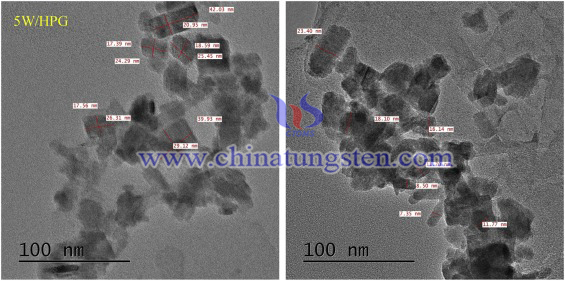Production of WO3/HPG Nanocomposites Using Ammonium Paratungstate
- Details
- Category: Tungsten Information
- Published on Wednesday, 30 December 2020 01:06
Tungsten oxide (WO3) is believed to be a remarkable and feasible photoactive material due to its stable physico-chemical characteristics under different reaction conditions. Furthermore, WO3 has a band gap energy around 2.6 eV. Nether less, bulk WO3 semiconductor, surface accumulation of photo generated charge carriers led to increase their recombination rate and eventually limiting the photocatalytic efficiency.
Carbon had been applied as a support to enhance the photo conversion yields of semiconductor-carbon catalysts. It is considered that carbon has special characteristics that enhanced the photocatalytic performance. higher photocatalytic efficiencies for the WO3/carbon composites than for the bulk WO3.

Recently, a WO3/hexagonal platelet graphite (HPG) nanocomposite with excellent photocatalyst perfomence has been introduced. Ammonium paratungstate (APT) has been used as starting material, and inexpensive HPG as a support. WO3/HPG composites with different amounts of WO3 has been fabricated to investigate the effect of HPG to WO3. The experimental procedures are as follows:
The hexagonal platelet graphite (HPG), ammonium paratungstate (APT), hydrochloric acid (HCl) and p-nitrophenol were used as raw material without further treatment.
The HPG dispersion (2 mg/mL) was pre-sonicated in a 50 mL of deionized water for 10 min at room temperature. Calculated amount of APT was weighed and added to the HPG dispersion and the obtained suspension was stirred for 1 h at room temperature. Under vigorous stirring, the pH of the contents was adjusted to 2 by adding 5 M HCl solution, and then the stirring was continued for 3 h. The final mixture was filtered and washed with deionized water and absolute ethanol for five times. The residual content was kept in an electric oven at 100 °C for 5 h and then calcined at 400 °C for 5 h under static air. A series of WO3/HPG nanocomposites were synthesized with various tungsten weight percent. The as-prepared products were labelled as xW/HPG (x = 1, 3, 5, and 7 W%), where x represents the weight percent of WO3.

In conclusion, WO3/HPG nanocomposites were successfully produced by simple precipitation under acidic conditions. 5W/HPG has best photocatalyst performance. The data obtained from the photocatalytic degradation of p-NP experiments indicated that the W/HPG nanocomposites exhibited excellent performance in the degradation of p-NP in acidic conditions (pH 4) under visible light. The observed enhancement in photocatalytic efficiency of W/HPG nanocomposites majorly due to the synergy between WO3 and HPG. The large surface area and decreased band gap energy and of synthesized W/HPG nanocomposites were enabled high adsorption of organic dye molecule and to reduce the recombination of photo generated electron and holes respectively. The present results indicate that it is possible to develop efficient and robust W/HPG nanocomposites photo catalysts by a simple synthesis method.
- APT Manufacturer & Supplier, Chinatungsten Online: ammonium-paratungstate.com
- Tungsten News & Prices of China Tungsten Industry Association: www.ctia.com.cn
- Molybdenum News & Price: news.molybdenum.com.cn
- Tel.: 86 592 5129696; Fax: 86 592 5129797; Email: sales@chinatungsten.com



 sales@chinatungsten.com
sales@chinatungsten.com